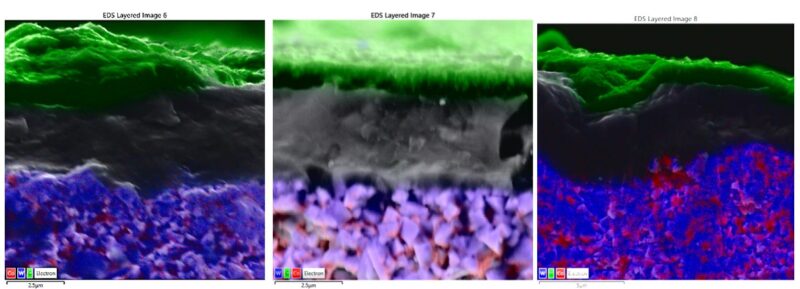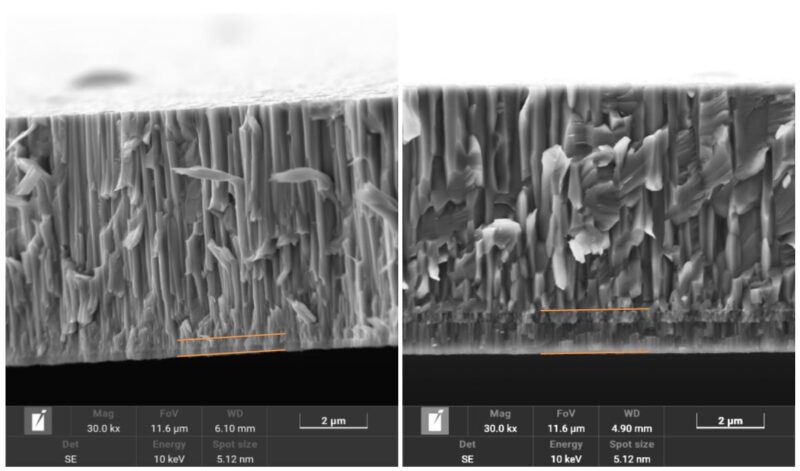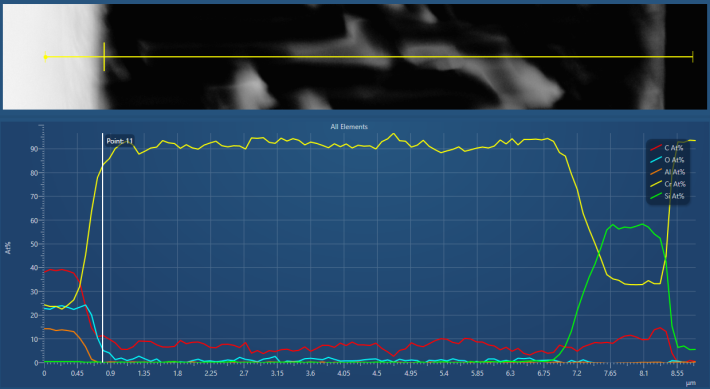
Diffusion properties
Diffusion is a mechanism of mass transfer in solids caused by the thermal motion of atoms. Very compact and defect-free PVD layers can serve as diffusion barriers that prevent the penetration of unwanted substances into the volume of the substrate.
PVD coatings: VANADIN, SIGAAN AL
Diffusion properties quantitatively describe the material’s ability to enable substances to migrate atoms, ions or molecules of other substances through each other as a result of the diffusion process. Diffusion is a transport phenomenon in which particles move from areas with higher chemical potential energy (concentration) to areas with lower chemical potential energy due to thermal movement. This process is controlled by a concentration gradient and can be affected by other factors such as temperature, particle size, material structure, and the presence of disorder or defects in the crystal lattice.
A very dense and defect-free PVD layer serves as an effective diffusion barrier. These barriers significantly reduce or completely block diffuse flow of unwanted atoms or molecules, such as corrosive or reactive agents, thereby preventing their penetration into the underlying substrate. This minimizes the risk of corrosion degradation, oxidation or other forms of chemical or electrochemical damage to the substrate, which fundamentally contributes to extending its functional life.
Diffusion properties are therefore a critical parameter in the development and application of materials for protective coatings in demanding environments such as applications in microelectronics, biomedical implants, aerospace and automotive industries. In these areas, it is crucial to ensure resistance to chemical influences, mechanical wear and other degradation mechanisms, which directly affects the performance, reliability and lifetime of the final product.
Application
Fig. 1 shows the EDX mapping of the elements Co, W and C during the evaluation of the PVD layer of nc-AlTiN/a-Si3N4 as a diffusion barrier for cobalt migration from WC-Co cemented carbide to the upper C layer. Co remains in the WC-Co system volume and does not penetrate the upper C layer.
Fig. 2 shows the effect of the exposure temperature of 400°C or 600°C for the diffusion of Si from the base material into the Cr PVD layer with an inhomogeneous columnar structure. Fig. 3 shows the EDX line scan of the interface of the layer and the base material with a step change in the ratio of Cr and Si.



